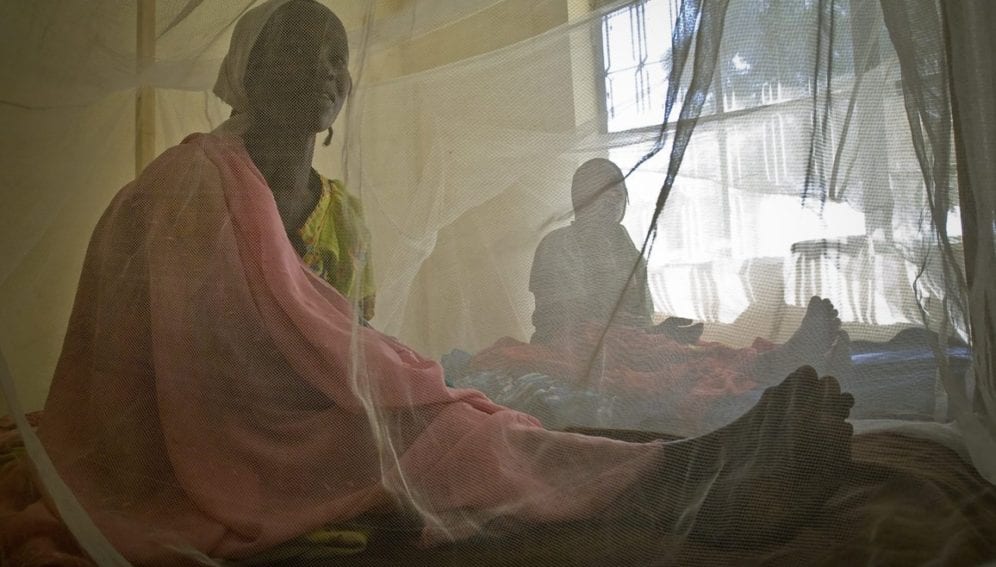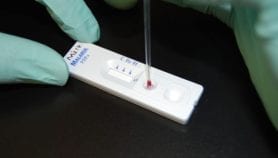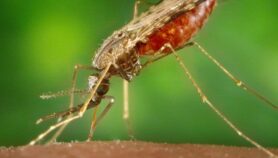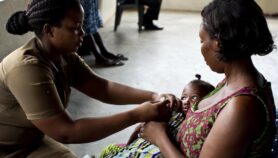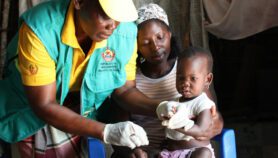By: Laura Owings
Send to a friend
The details you provide on this page will not be used to send unsolicited email, and will not be sold to a 3rd party. See privacy policy.
Malaria control methods that combine insecticide-treated bednets and vaccines could increase or decrease the rate of infection, according to a new modelling study.
Almost 600,000 people, mostly in Sub-Saharan Africa, died of malaria in 2013, according to the estimates of the WHO released last month.
While no malaria vaccines have yet been approved for use, about 25 candidates are in development, researchers say. The candidates fall into three categories: preerythrocytic vaccines (PEVs), which reduce risk of infection from disease-carrying mosquitos; blood-stage vaccines (BSVs), which reduce disease severity and transmission blocking vaccines (TBVs), which reduce the rate at which others are infected.
“In countries where bednets are very effective, should we be focusing on developing a vaccine that may make the situation worse if used with bednets?”
Andrew Dobson, Princeton University
In a study published in the Proceedings of the National Academy of Sciences this month (19 January), scientists from the Netherlands and the United States used a general mathematical model of malaria transmission to examine the interaction between bednets and these vaccine types.
The results showed that interactions between bed nets with PEVs and BSVs reduced levels of natural immunity, leading to an increase in malaria cases in older children and adults. However, using bednets and TBVs provided significant benefits both at individual and population level.
“Ironically, the vaccines that work best with bednets are the ones that do not protect the vaccinated host — the bednet does that — but instead block transmission of malaria in mosquitos that have found an opportunity to bite vaccinated hosts,” says Yael Atzy-Randrup, one of the study’s authors, who is an assistant professor of theoretical ecology at the University of Amsterdam in the Netherlands.
The results pose a public health dilemma, according to co-author Andrew Dobson. “We have to have a much broader discussion about whether people are prepared to use a vaccine that doesn’t explicitly protect them, but helps protect others in the population,” he says.
Dobson, who is a professor of ecology and evolutionary at the US-based Princeton University, adds that the availability of funds and resources should also be considered. “In countries where bednets are very effective, should we be focusing on developing a vaccine that may make the situation worse if used with bednets?” he asks.
According to Maureen Coetzee, director of the Malaria Entomology Research Unit at South Africa’s University of Witwatersrand, the distribution of treated bednets has been scaled up considerably in Sub-Saharan Africa.
Coetzee says some areas use mosquito coils and indoor house spraying, and adds that the health-seeking behaviour of individuals in these communities should also be considered in combined malaria control strategies.
“You’ve got communities that have few resources and facilities and must rely on what’s readily available,” Coetzee explains. “Even if TBVs are effective, they offer limited protection and should never be anything more than a supplementary tool.”
Link to full article in Proceedings of the National Academy of Sciences
This article has been produced by SciDev.Net's Sub-Saharan Africa desk.
References
Proceedings of the National Academy of Sciences doi 10.1073/pnas.1409467112 (2015)


